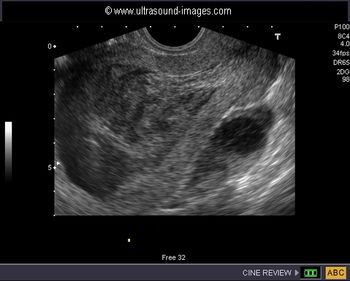
Uterine artery embolization for fibroids results in a tremendous reduction in menorrhagia. But while complication rates are low, up to 15% of patients are readmitted for indications like pain, bleeding and infection.

Uterine artery embolization for fibroids results in a tremendous reduction in menorrhagia. But while complication rates are low, up to 15% of patients are readmitted for indications like pain, bleeding and infection.

In a randomized study of 249 women treated for urge incontinence, Botulinum toxin A (Botox) reduced episodes from an average of 5 per day to 3.3 per day, equal to standard anticholinergic treatment.

“Using a prophylactic sling during prolapse repair significantly reduces postoperative stress incontinence,” said Anthony Visco, a representative of the American Urogynecologic Society at the 61st annual American Congress of Obstetricians and Gynecologists meeting.

Diana Bianchi discusses noninvasive prenatal testing, including false positives and testing average-risk women, at ACOG's Annual Meeting.

The US Food and Drug Administration has announced that the children of mothers who took medications including or related to valproate sodium during pregnancy show decreased IQ scores, and that these drugs are now contraindicated for pregnant women.

This middle-aged woman has pelvic pain and vaginal discharge. What is your diagnosis based on these ultrasound images of the uterus?

Many ob/gyns and nurse practitioners see vulvovaginal disease on a day-to-day-basis, but lack the knowledge to accurately diagnose and treat them. At ACOG’s 61st Annual Clinical Meeting, Hope Haefner, MD, Department of Obstetrics and Gynecology at the University of Michigan, and Lynette Margesson, MD, Adjunct Assistant Professor of Obstetrics and Gynecology and Surgery (Dermatology) at the Geisel School of Medicine at Dartmouth, presented tips to help clinicians identify common and rare vulvar diseases.

Hormones, particularly transdermal estradiol, may help women maintain mood, cognition and memory in middle-age and beyond. “What we have learned the past decade is that not all estrogens are the same,” said ACOG presenter Sarah Berga, MD, of Women’s Health at Wake Forrest School of Medicine, “and that the differences can be critical.”

One in seven women will experience pelvic pain in her lifetime, and between one- and two-thirds will have chronic pain that persists for more than three years. But although it’s common, it can be one of the most difficult and frustrating conditions physicians treat.

The female hormone megestrol acetate (MA) improves appetite and is associated with slight weight gain in patients with cancer, AIDS, and other underlying pathology, but comes with significant adverse events.

Fish oil supplementation that is rich in omega-3 fatty acids does not prevent depressive symptoms during pregnancy or in the postpartum period, according to the results of a double-blind, randomized controlled trial.

Women with high levels of antibodies related to celiac disease are more likely to deliver low birthweight (LBW) babies, according to a large Belgian study published in Gastroenterology.

The US Food and Drug Administration (FDA) has approved the Plan B One-Step levonorgestrel pill for emergency contraception (EC) without prescription for women aged 15 and older, although proof of age must be provided at the time of purchase.

The American Academy of Pediatrics (AAP) has issued a policy statement that advocates standards of practice for planned home births that are consistent with standards of practice for infants born in medical care facilities.

This surgical video shows resection of a 3-cm intracavity fibroid using minimally invasive surgical technology. The patient, a 40-year-old woman, presented with a 60-day history of abnormal bleeding.

The average ob/gyn might deliver 10 to 15 babies a month over a 30-year career-let’s say 4000 to 5000 in total. Inspire one medical student to enter our field every year by striking up a relationship during his or her clerkship, and you could influence the births of more than 100,000 babies down the road.

In utero exposures to altered maternal nutrition, stress, or environmental toxins may alter organ structure or function, leading to adult obesity.

Medical management of early pregnancy failure is an appropriate and safe option for many women who want to avoid surgical intervention or expectant management.

When it comes to discussing exercise, it seems that many of us are at a loss for words. What kind of exercise should I recommend? How much exercise is enough? How much is too much? How do I know that my patient is actually exercising? How do I prescribe exercise? As you can imagine, there are apps for this!

This difficult defense-a young woman dying shortly after a routine tubal ligation-was further complicated by conflicting reports about who said what to whom and when.

Two physicians discuss the pros and cons of universal assessment for ob/gyns and their patients.




In patients with an American Fertility Society class V or class VI septate uterus, hysteroscopic metroplasty is associated with a significant improvement in reproductive performance.

Using ultrasound imaging before an epidural catheterization or lumbar puncture can reduce the risk of failed or traumatic procedures and can lower the number of needle insertions and redirections, according to the findings of a systematic review and meta-analysis.

A study appearing in the American Journal of Obstetrics & Gynecology may be the first to connect teenaged motherhood with adult obesity. Researchers found that US women who give birth as teenagers are significantly more likely to be overweight or obese later in life than are women who were not teenaged mothers.

Total delivery costs are lower-and rates of vaginal delivery higher-when external cephalic version (ECV) is done with versus without neuraxial anesthesia. So say the results of a study by Stanford University researchers published online in Anesthesia & Analgesia.

A population-based cohort study, the results of which were published online on the website of the Journal of the American Medical Association on April 24, has found that the children of women who used valproate during pregnancy had a higher risk of autism spectrum disorder and childhood autism compared with children of women who did not use valproate.

This patient presented with 18 months of secondary infertility following a second trimester dilation and extraction.